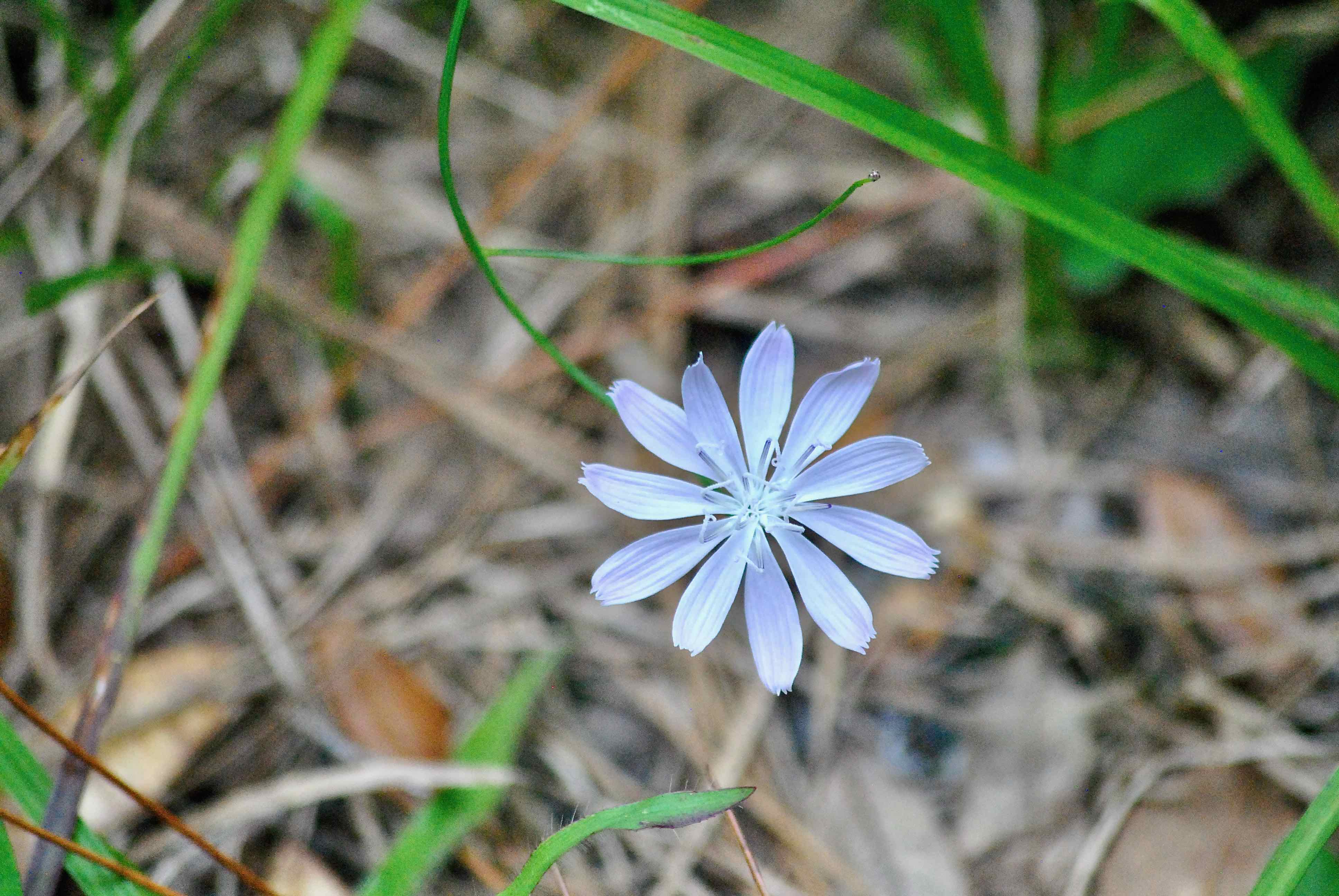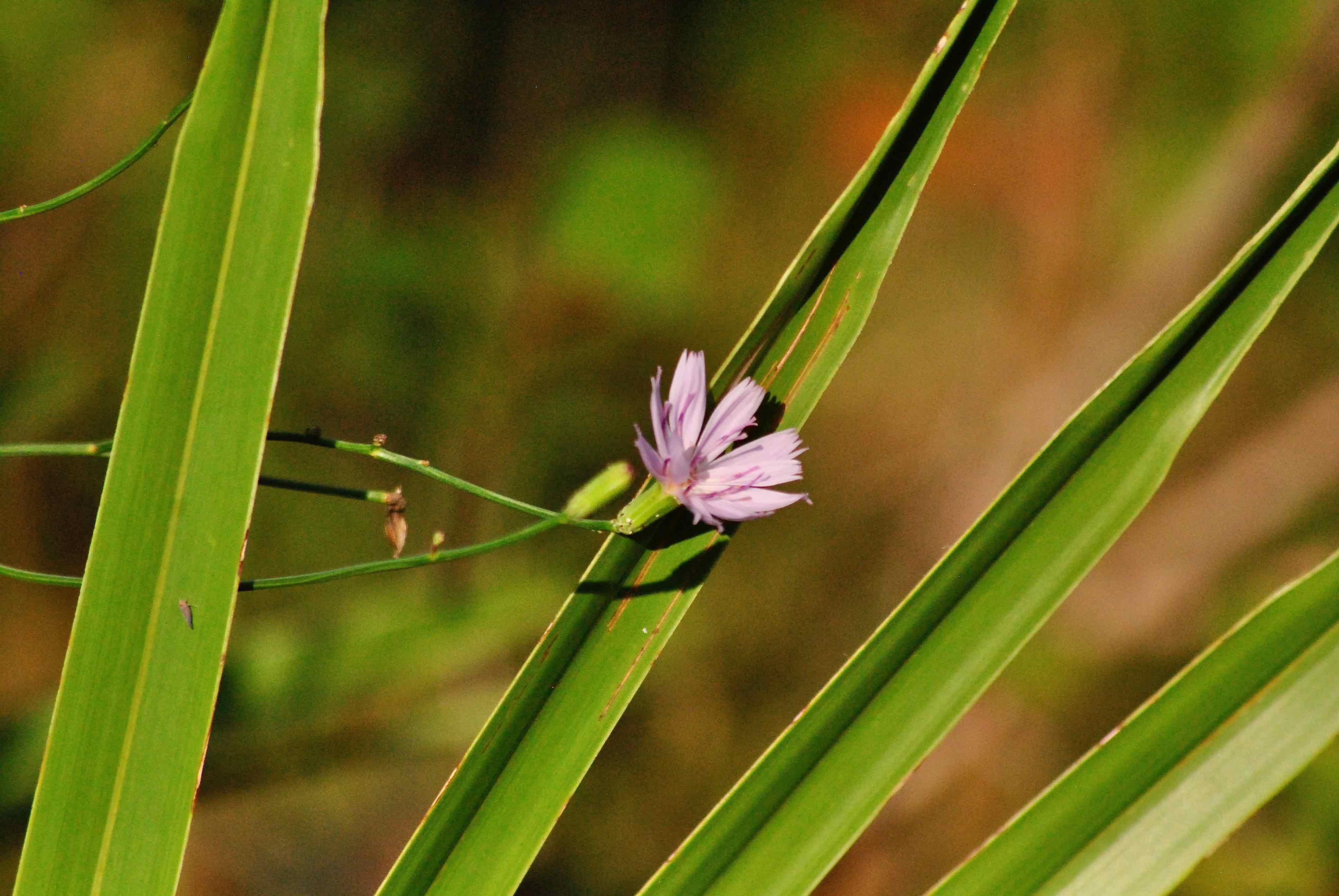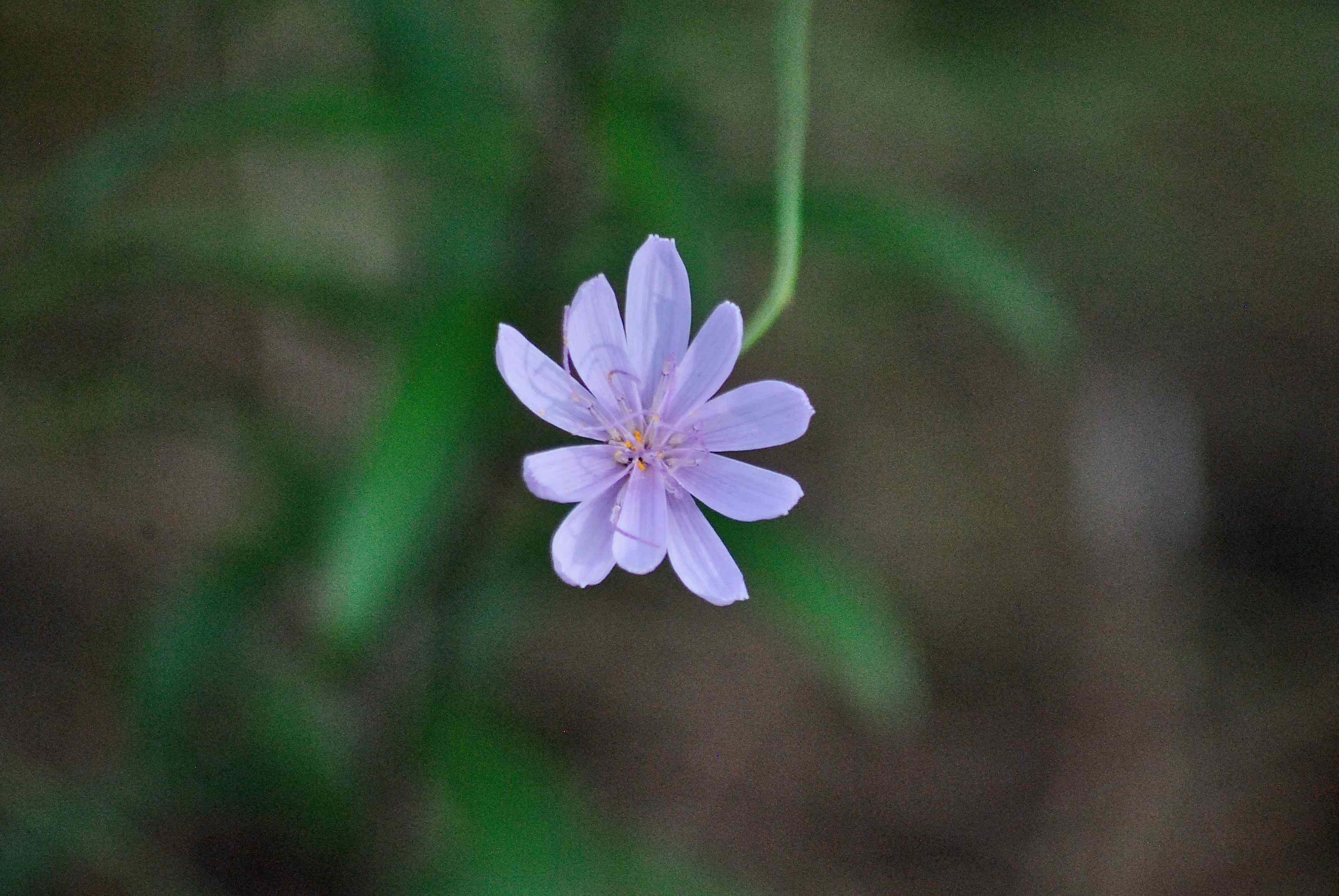
Roserush, photographed at Halpatiokee Regional Park, Stuart, Martin County, in May 2015.
For our money, there might not be a more perfect flower in all of nature than this guy, roserush, Lygodesmia aphylla. They seize your eye with their soft colors and simple beauty.
But what roserush has in quality, it lacks in quantity. It only puts one flower at a time, and has little in the way of foliage. When you're this close to perfection, you don't need numbers to get attention. On the other hand, without the flower, it's so sparse as to be invisible, almost literally.
It is a Florida native, found in most of the Sunshine State except the western end of the Panhandle and the southern tip of the Peninsula. We've only seen it in the Jupiter area in northern Palm Beach County and in Martin County. The Institute for Regional Conservation in Delray Beach considers it rare, but it is not listed as threatened or endangered by the state or by the feds. Roserush is also found in parts of Georgia.
Roserush is a perennial. It flowers from February through summer, sometimes as late as November. It dies back each fall, re-emerging the following spring. It can be fairly tall, reaching as high as three feet, with few leaves and few branches. A single flower, about an inch across, will emerge atop the stock; when it dies, another might emerge from a branch. But only one flower will appear at a time. Flowers can be almost white, with the slightest hints of blues and pinks and lavenders, to deeper shades of pinks and lavenders.
Each flower lasts only a day, opening just before sunrise, wilting by sunset. The flower gets progressively more beautiful as the day goes on, until the very end. The flower will produce a head of whispy seeds designed to be blown by the wind. The plant does produce a rosette of leaves at the base, but when flowers appear, the leaves wither away, leaving nothing but that skinny stalk.
The seeds are easy to collect and roserush isn't a particularly finicky plant to grow, experts say. It is cultivated, but few if any commercial nurseries offer it for sale. Standard disclaimer: Don't collect seeds on public lands. It's illegal. Collect seeds on private property only with permission of the owner.
Again, the one drawback roserush has, at least as a potential landscaping plant, is the minimal number of flowers it puts out at any one time. It has to be densely planted to get an kind of effect on the landscape.
Habitat for rushrose includes flatwoods, pine barrens, scrub and sandhill — basically upland places with sandy, well-drained soils.
There are nine members of the Lydogesmia genus, all found in North America, but roserush is the only one native to South Florida. All are similarly sparse in their appearance; one member so much so that it is called the Texas skeleton flower.
Native Americans used various members of Lydogesmia as food and medicine, but apparently our guy wasn't one of them.
Roserush is a member of Asteraceae, the daisy and sunflower family. Other spellings of its common name include rose rush and rose-rush. We've also seen rush weed.
Click on photo for larger image
Links for Roserush



